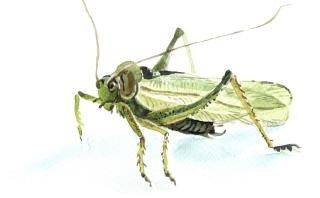Advertisement
I did not want to drive through California’s Central Valley. It was going to add a couple of hours to our vacation route, through ugly suburbs and weekend traffic. But my husband loves looking at farms. So I went.
Feeling cranky in the passenger seat, I picked a town and called the tourist office: “No, we don’t want to go the Almond Blossom Festival. Where can we see almond trees in bloom?” No help there.
With the sun sinking fast toward the Diablo Mountains, we finally stopped on a dirt road and asked a woman walking her dog. She gave us a complex set of lefts and rights to Chrisman Road outside the town of Tracy.
In late February the valley was a massive cloud of white blossoms, held aloft by slender trunks laid out in geometrically perfect rows as far as you could see. An orchard in bloom has to be one of the prettiest farm sights, but at this scale, it was stunning.
The Central Valley is where much of this country’s vegetables, fruits, nuts, and berries are grown. I love almonds. I eat them every day and often carry them with me. Standing at the orchard edge, with four puppies from a nearby house assaulting me with wiggles and kisses, I conceded that coming here was vacation-worthy, after all.
Turning into a mountain pass back toward the coast, we drove under a towering dam holding back the San Luis Reservoir, where billions of gallons of precious water are stored for irrigating the arid valley.
Everywhere we went in California the drought was on people’s minds. My brother-in-law explained California needs snow pack in the mountains more than the torrential rains it’s gotten this year. A woman at the next table in a café told me she’s measured two gallons of water run before hot water gets to her bathroom. Dire prognoses kept trickling over our rental-car radio, too: not just the drought, but also El Niño, climate change, and deaths from hunger in the decades to come.
It’s hard to see how this kind of agriculture can be sustained. Each California almond takes a gallon of water to grow. An almond grower we met later told us he is cutting down 10,000 acres of trees, more than a quarter of his crop.
But another food development coming out of northern California—a small-scale livestock venture—got me as excited as the fate of almonds depressed me.
The same gallon of water required by a California almond can grow one pound of crickets. Bitty Foods in San Francisco makes flour out of slow-roasted crickets, the ordinary household kind, Acheta domesticus. A cup of ground crickets has 70 grams of protein, good fats, and is high in fiber, iron, and magnesium.
I first met Bitty Foods cofounder Megan Miller when she was speaking at a TEDx event. “Insects are the most efficient form of protein on planet Earth,” she said. Crickets require way, way less water, feed, and space than any other protein source, including plants. You could become a cricket farmer in a semi-trailer parked in your driveway, or grow your family’s protein needs in a box in the garage—the way she did when she was starting out.
Edible insects, 2,000 species of them, could be key to feeding the nine billion-plus population projected by 2050, the United Nations Food and Agriculture Organization has said. If insects become a mainstream food, we could reclaim 30 percent of the world’s land surface, now used for livestock and grain to feed them; reduce greenhouse gases by 18 percent; and reduce food costs by 33 percent. “I can’t think of another food that can have this kind of an impact on both the environment and the global economy, and that, in a nutshell, is why I eat bugs,” Miller concluded.
At the lunch break I headed straight to the Bitty Foods cookie table. I wanted to taste all the flavors: ginger, chai, chocolate. I bit in. They were good, especially the ginger one. With twelve crickets per cookie, they were heavier than flour and butter cookies, even nutty; similar to desserts I’ve made with ground almonds.
When we returned to our seats, there was lots of buzz about the cricket cookies. Some people were just grossed out and didn’t want to go there. Some, like me, were excited. One teacher told me she was vegetarian, but this was an animal protein she’d happily eat. Miller calls crickets a “gateway bug,” palatable, especially in flour form, which bakes nicely in quick breads and pizza crust. This summer Bitty Foods is launching a spicy baked snack chip.
These days conversations about the future so quickly turn bleak. The voices weighing in on how to feed the planet in the decades ahead often hold out absolute answers: Only biotechnology can yield enough to feed the world. Only organic farming can give us healthy food production. Only if humans stop eating animal protein do we have a chance at stopping climate change.
Just eating more insects won’t solve our problems. But I find it a bright spot of hope, a small, simple solution already part of the culinary culture of most of the world. And it makes me think: the answers we need so often lie in the surprising turns, the places we never considered, the places we think we don’t want to go.
